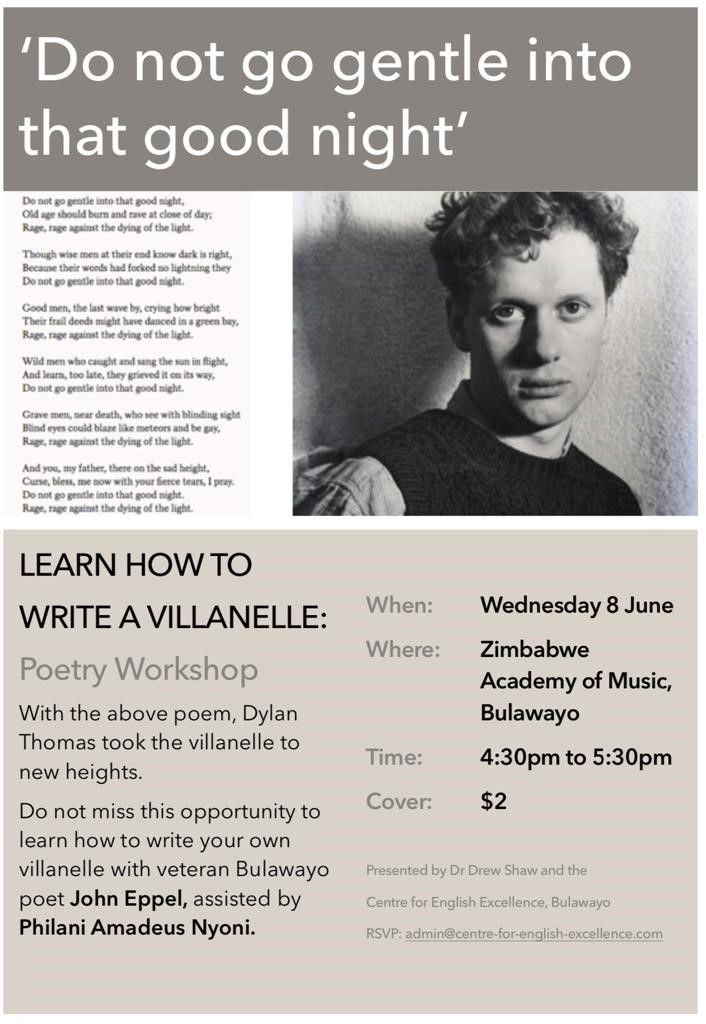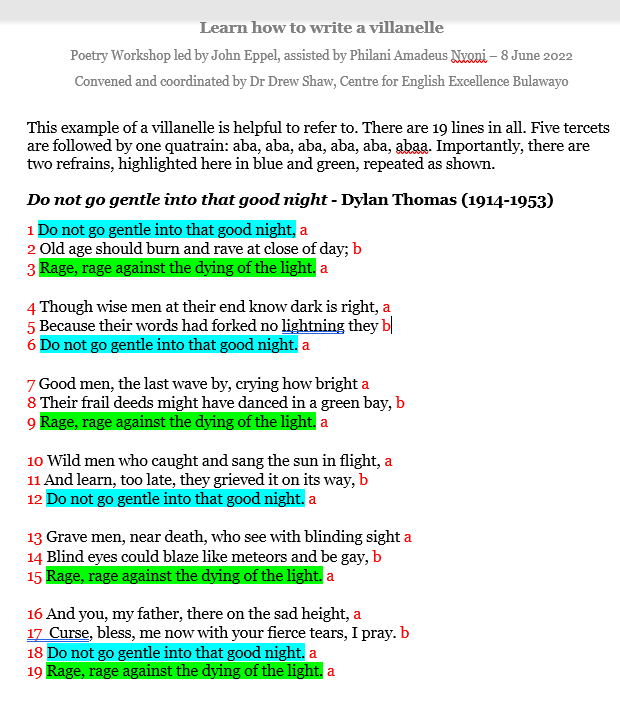How to write a villanelle

On a chilly winter's evening at the Zimbabwe Academy of Music (8th June 2022), the Centre for English Excellence and the Poetry and Literature in Bulawayo Project organised an event in support of aspiring poets. As coordinator, I welcomed participants to a workshop led by veteran poet and teacher John Eppel, assisted by Philani Amadeus Nyoni. Both are proponents of structured poetry and both are well known in Bulawayo.
Our subject was 'How to write a villanelle', which is an ancient form, consisting of five tercets and one quatrain, with repeating rhymes and two refrains - adapted to great effect in modern times by the likes of Dylan Thomas, Sylvia Plath, Elizabeth Bishop, Oscar Wilde and Seamus Heaney. The villanelle, John Eppel said, is probably the most artificial of poetic forms, and yet it has produced fine poems, also providing excellent practice for aspiring poets wanting to hone their skills.
As John explained, one needs - most importantly - two strong refrains, then all else will fall into place. Dylan Thomas's 'Do not go gentle into that good night' provides a useful example (its second powerful refrain being 'Rage, rage against the dying of the light'). Thus, we began by listening to the Welsh poet's reading of his famous villanelle, at the same time reading printed versions that were distributed to participants.
Less important, John explained, is the meaning: more important is the sound. The unique musical quality of the villanelle is achieved with its tightly structured rhyme scheme - aba aba aba aba aba abaa. Dylan Thomas's villanelle, below, neatly shows which lines should be repeated and where.

Our goals in the workshop were to acquaint with the challenges of the form, to replicate its essential structure, then to practise it - producing in the end our own villanelles. As John explained, aspiring poets need to become adept in their discipline - like pianists doing their daily scales, or athletes doing exercise routines.
In this exercise, form came first, and content second, and each participant managed to complete a 19-line villanelle - impressively. As poets themselves, John and Philani were at hand to answer questions and offer advice; and I too was able to circulate, sharing my own experience of the task and its challenges, as I had completed the exercise myself shortly beforehand, finding it tough but satisfying.
It was wise, I discovered, and as John Eppel confirmed, to opt for rhyme-friendly words. Dylan Thomas chooses 'night' and 'day', for example, as it is possible to find a range of rhyming words for these. One would struggle, for example, with a word like 'orange'!
On completion, workshop participants read their poems aloud and were applauded by the group. Just the act of achieving the villanelle form and its engrossing sound quality gave a sense of accomplishment. There would be plenty of time to polish first attempts or write new villanelles afterwards. In this session, in a short space of time, we we witnessed real creativity and sure signs of talent.
Following the success of 'How to write a villanelle', all agreed it was a highly rewarding exercise and expressed interest in workshops on other poetic forms in the future.
Drew Shaw
Coordinator, Centre for English Excellence Bulawayo & Poetry and Literature in Bulawayo Project